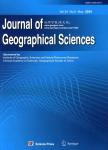中国边境地区城镇化时空格局及其驱动力
Spatio-temporal pattern and driving forces of urbanization in China's border areas作者机构:Institute of Geographic Sciences and Natural Resources ResearchCASBeijing 100101China Key Laboratory of Regional Sustainable Development Modeling of the Chinese Academy of SciencesBeijing 100101China College of Resources and EnvironmentUniversity of Chinese Academy of SciencesBeijing 100049China
出 版 物:《Journal of Geographical Sciences》 (地理学报(英文版))
年 卷 期:2020年第30卷第5期
页 面:775-793页
核心收录:
学科分类:12[管理学] 1204[管理学-公共管理] 0709[理学-地质学] 0704[理学-天文学]
基 金:National Natural Science Foundation of China,No.41871120 Priority Research Program of Chinese Academy of Sciences,No.XDA20010102。
主 题:border area urbanization spatio-temporal pattern driving force China
摘 要:Border area is not only an important gateway for inland opening-up,but also an important part of completing the building of a moderately prosperous society and optimizing national urban spatial pattern in China.Due to the location,natural resources endowment,and traffic accessibility,the urbanization speed is relatively slow in border areas.Therefore,it is a special area that needs to pay close attention to,especially under the background of the Belt and Road Initiative and China s regional coordinated development program.Based on the county-level data from 2000 to 2015,this paper tries to analyze the spatio-temporal pattern of urbanization in 134 border counties,and applies geographical detector method to study the driving forces of urbanization in border areas.Conclusions are as follows:(1)From 2000 to 2015,urbanization rate in border areas has been lower than the national average,and the gap has been widening.Some border counties in southern Xinjiang,Tibet,northeast of Inner Mongolia,and Yunnan,are even facing the problem of population loss.(2)In the same period,urbanization rate in the northwestern and southwestern border is low,while their urbanization rate grows relatively faster comparing with other border counties;urbanization rate in Tibet border is the lowest and grows relatively slowly;urbanization rate in the northeastern and northern border is slightly higher,but it grows slowly or even stagnates.(3)Transportation and industry are the important driving forces of urbanization in border areas,while the driving forces of market is relatively weak.And there are obvious mutual reinforcements among the driving forces,while the effort and explanatory power of resource force increases obviously after interaction.(4)Urbanization rate in the northwestern and southwestern border areas grows relatively fast,with industrial force and transportation force,market force and administrative force as the main driving forces respectively.Tibet border area has the lowest urbanization rate and growth rate,as the driving force of urbanization with strong contribution has not yet formed in Tibet.In the northeastern and northern border areas,the contribution of transportation force to urbanization is greater than other forces,and its interaction with market and industry has obvious effects.



